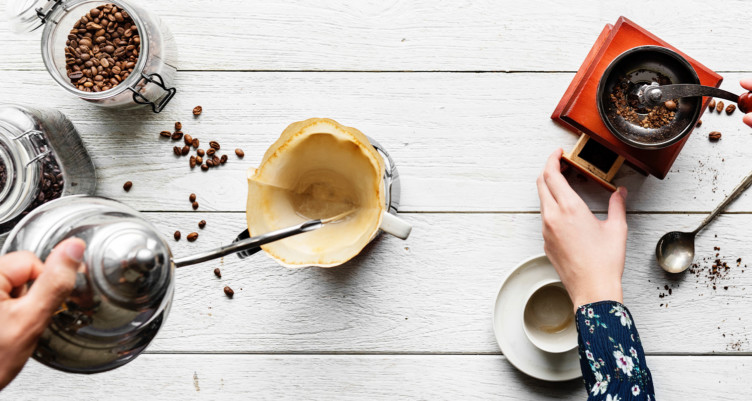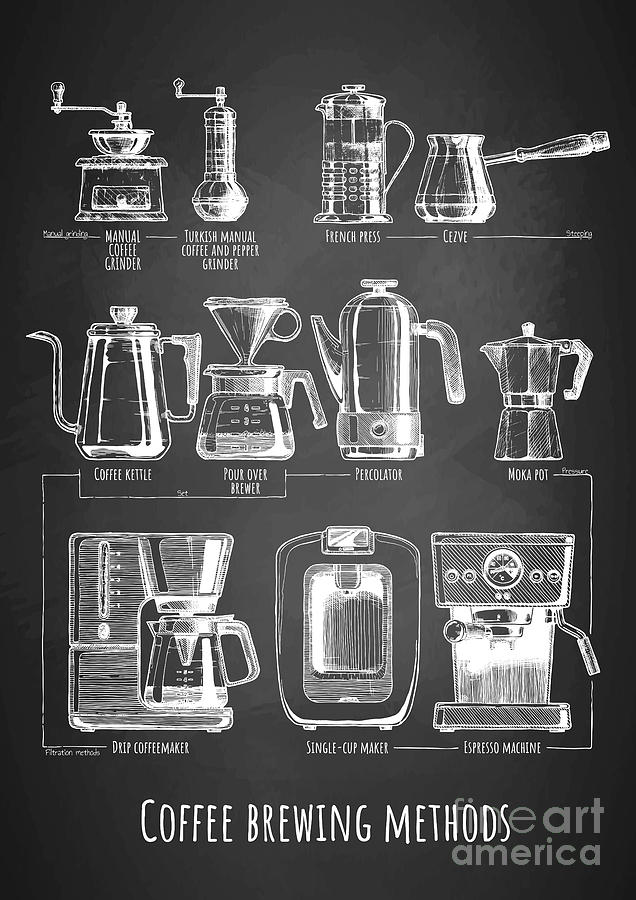The Effect of Different Coffee Brewing Methods on Flavor and Aroma
The Effect of Different Coffee Brewing Methods on Flavor and Aroma
Blog Article
Comprehending Different Coffee Brewing Approaches for a Richer Flavor Experience
A comprehensive understanding of different coffee brewing approaches can profoundly affect your taste experience, revealing the complex subtleties of this beloved drink. Each method-- whether it be the simple drip coffee machine, the immersive French press, or the specific pour-over-- offers distinct advantages that provide to diverse tastes buds. In addition, progressed methods like espresso extraction and cold brewing further expand the spectrum of flavors available. As you take into consideration which come close to ideal matches your preference preferences, the inquiry remains: how do these methods influence the final cup, and which might boost your coffee experience to new heights?
Drip Coffee Manufacturer
While several coffee fanatics value the subtleties of various developing techniques, the drip coffee maker remains a staple in households and offices because of its simplicity and efficiency. This device runs by home heating water and permitting it to flow via coffee premises, drawing out oils and flavors, which after that leak into a pitcher below.
The drip coffee machine is preferred for its capability to make numerous mugs simultaneously, making it suitable for hectic mornings or celebrations. Individuals can conveniently tailor the stamina of their coffee by changing the amount of coffee grounds used or picking a brew toughness setting located in numerous contemporary machines. Furthermore, programmable attributes enable customers to set a timer, making certain a fresh pot of coffee prepares upon waking.
Upkeep is relatively simple, as the majority of drip coffee makers need routine cleaning to eliminate mineral build-up. Many designs are additionally equipped with functions such as vehicle shut-off, which enhances security and power performance. Ultimately, the drip coffee maker uses a easy to use and trusted option for those seeking a constant and enjoyable coffee experience without the complexities of more sophisticated developing approaches.

French Press
The French press supplies a distinct brewing experience that contrasts sharply with the automated process of a drip coffee machine. This guidebook approach permits an intimate communication with the coffee-making procedure, giving users greater control over different specifications, such as steeping time, coffee-to-water ratio, and grind size.
To brew coffee utilizing a French press, coarsely ground coffee beans are steeped in hot water for approximately four minutes. This immersion technique removes abundant oils and tastes from the coffee, causing a robust drink that highlights the subtleties of the beans made use of. The steel or nylon mesh filter of the French press allows necessary oils to continue to be in the brew, adding to its durable taste profile.
When utilizing a French press, it is necessary to pay attention to the brewing time and water temperature, as these aspects significantly influence the final taste. Experimentation with various coffee ranges and soaking periods can cause a customized flavor experience. Generally, the French press is a satisfying and accessible approach for coffee enthusiasts seeking to deepen their gratitude for the complexities of their preferred beverage.
Pour-Over Techniques
Pour-over strategies raise the coffee brewing experience by allowing precise control over every facet of the procedure, from water temperature to putting method. This approach involves manually putting warm water over coffee premises in a filter, usually located in a dripper, which allows for ideal extraction of tastes.
To start, picking the ideal coffee work is critical; a medium to medium-fine work works best to make certain proper water circulation and removal (coffee brewing methods). Next, water temperature must preferably range between 195 ° F and 205 ° F, as this array extracts the most effective tastes without heating the coffee
The pouring method additionally plays an important function. A slow, round motion when saturating the premises can help uniformly remove oils and flavors. It's typically advised to allow the coffee to bloom for 30 seconds after the preliminary put, which lets co2 retreat and enhances taste development.
Coffee Machines
For those looking for a various yet equally satisfying developing experience, coffee devices use a distinct approach of coffee preparation that stresses pressure removal. This procedure entails forcing warm water via finely-ground coffee at about 9 bars of pressure, resulting in a concentrated shot of espresso that showcases rich flavors and aromas.

The top quality of espresso is influenced by numerous aspects, including grind dimension, dose, water temperature, and removal time. Accomplishing the ideal espresso shot calls for technique and interest to information. Furthermore, the espresso my blog serves as a base for numerous coffee beverages, such as lattes, coffees, and Americanos, making it a versatile choice for coffee fanatics.

Cold Mixture Methods
Cold mixture coffee has gained appeal for its smooth, low-acidity profile and revitalizing taste, making it a perfect selection for warm weather or those conscious standard brewing techniques - coffee brewing methods. The procedure of chilly developing normally involves soaking coarsely ground coffee beans in cold or space temperature level water for a prolonged duration, typically 12 to 24-hour. This method essences tastes in a different way than hot water, leading to an abundant, complex brew that highlights chocolatey and fruity notes
There are different cool brew techniques readily available, including immersion and drip developing. The immersion approach is one of the most straightforward; just incorporate coffee and water in a container, let it steep, and after that filter out the grounds. Alternatively, the drip method utilizes a specific coffee manufacturer to slowly drip water with coffee premises, allowing for a much more regulated extraction process.
Despite the approach chosen, the coffee-to-water ratio is vital, typically suggested at 1:4 for a focused mixture that can be diluted with water or milk before serving (coffee brewing methods). Cold brew can be served over ice, blended with flavorful syrups, or made use of as a base for various coffee beverages, providing adaptability and an unique taste experience
Final Thought
To conclude, exploring various coffee brewing approaches substantially improves the taste experience. Each strategy, consisting of drip coffee machine, French presses, pour-over methods, espresso devices, and cool mixture, provides distinctive benefits and unique flavor profiles. Engaging with these diverse brewing processes not just enhances recognition for coffee's complexity yet likewise equips people to customize their coffee pleasure according to individual choices. Inevitably, proficiency of these methods can lead to their explanation a deeper understanding of coffee's elaborate flavors and scents.
Users can conveniently personalize the stamina of their coffee by changing the amount of coffee grounds used or picking a brew strength establishing located in numerous modern makers. Ultimately, the drip coffee manufacturer provides a dependable and easy to use choice for those looking for a constant and enjoyable coffee experience without the complexities of even more fancy developing techniques.
To make coffee using a French press, coarsely ground coffee beans are soaked in hot water for around four minutes. Conversely, the drip technique makes use of a specific coffee manufacturer to slowly leak water via coffee grounds, enabling for an extra controlled removal procedure.
Engaging with these varied developing processes not just boosts gratitude for coffee's intricacy yet also equips people to tailor their coffee satisfaction according to personal preferences.
Report this page